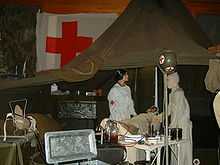Protected persons

Protected persons is a legal term under international humanitarian law and refers to persons who are under specific protection of the Geneva Conventions and their Additional Protocols during an armed conflict. They include medical personnel and others carrying out humanitarian work, the sick or wounded, shipwrecked persons not taking part in hostilities, prisoners of war and other detained persons, and civilians, who are all regarded as non-combatants under international humanitarian law. Violating the protection of "protected persons" is a war crime.
The exact nature of their protection varies between the groups. The most extensive protection is accorded medical personnel under the First and Second Geneva Convention, which establish that medical personnel (whether military or civilian) may not be attacked, harmed or taken as prisoners of war, and that their humanitarian work may not be inhibited, and also establish the red cross, red crescent and red crystal emblems to be used as protective signs to identify and protect medical personnel and their facilities or vehicles from attack.[1] Attacking a person, building or vehicle legitimately marked with the protective sign is a grave war crime, whereas misusing the protective sign to mask military operations is the war crime of perfidy.
References
- ↑ Persons protected under IHL, ICRC